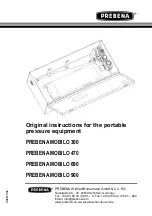
7 / 13
7. In/Out Switch
This switch enables you to quickly hear the compressor/limiter in or out of the audio chain.
When the switch is in the OUT position, all limiting and compression controls and functions are
bypassed, with the exception of the gain and output controls, which continue to function.
8. Stereo Tie Switch
This switch allows for gain reduction on a stereo signal with no degradation of a stereo image.
When pressed in, the stereo tie switch combines each channel’s internal detector outputs so
that the channel with the loudest signal will determine the action applied to both channels.
Leave this switch for normal operation.
9. Treshold/Gain reduction display
As soon as the threshold level is reached, the yellow LED illuminates. Depending on how far
the input level rises above threshold, successive red LEDs will illuminate, indicating gain
reduction. Gain reduction can best be described as the difference between input level and the
resulting change to output level. For signals above threshold, output level will increase only to
the extent that the ratio control allows.
10. Input/output meter select
While the gain reduction display accurately represents the action of the limiter, comparing
input to output level in real time is somewhat more intuitive, and is made simple using the
input/output meter select switch. The input meter takes its signal just after the gain control,
and will indicate input signal level regardless of output levels or limiter settings. The output
meter display takes its signal from the actual output of the unit, so every control that affects
the output will also have an effect on output meters. Use in conjunction with the gain reduction
meters. Input/output meters prove to be an extremely useful diagnostic tool when working with
system dynamics and level control.
A unique feature of this compressor/limiter is the incorporation of a double release-time constant.
When a conventional compressor/limiter is adjusted for slow release times, transient such as mic
‘pops’ may cause a severe reduction in gain followed by a slow fade up, making the action of the
limiter very obvious. With the double fine constant, release from gain reduction after a brief transient is
always fast, with a slower release after a sustained overdrive.































